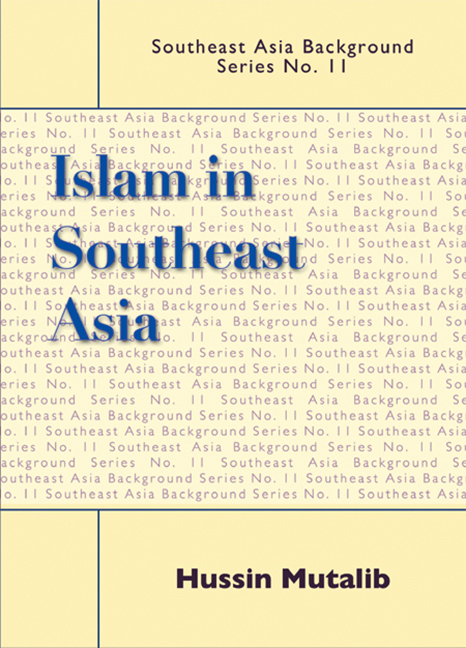Book contents
1 - Introduction: Islam in Southeast Asia — Origins, Sources of Spread, and Role of Colonialism
Published online by Cambridge University Press: 21 October 2015
Summary
Of the estimated 1.3 billion Muslims in the world, about 60 per cent live in Asia. Some 250 million Muslims reside in Southeast Asia. While Muslims in this region may be a minority in the Muslim world, their role in shaping the future destiny of Islam is far from peripheral. Indonesia is the largest Muslim country in the world, Malaysia is a dynamic, modern Muslim country, and Brunei is one of the world's richest countries. Other than these three Muslim-majority countries, there are sizeable Muslim minorities in this region, including in Thailand, Philippines and Singapore, and other lesser known, smaller Muslim communities in Indochina, each with their own set of identities, aspirations and challenges.
If compared to Muslims elsewhere, it appears that Muslims in Southeast Asia are blessed with many assets and strengths. In fact, in some areas of nation-building, many countries in the Muslim world look upon Muslims here as a model — for economic development and modernization as well as a certain moderation in Islamic practice worthy of emulation. These assets aside, the sheer diversity and heterogeneity among Muslims here and the challenges besetting their relations with fellow non-Muslim citizens, and the State, cannot be underestimated in any analysis about Islam in this region.
The above challenges are more than evident when one considers matters such as the nature and extent of their Islamic practice; the salience of ethnicity in shaping their Muslim religiosity; the lack of unanimity among their religious elites (ulama) on the kind of Islam that is to be adopted in this age of globalization; and the Muslims' different levels of socio-economic progress, vis-à-vis non-Muslims. Muslim minorities, particularly those situated in the less developed countries in this region, are particularly susceptible to these problems and enigmas. Many are finding the going hard as they face the onslaught of modernization, globalization, and the States' perennial inability to accommodate their cultural and identity quests as Muslims and as citizens.
- Type
- Chapter
- Information
- Islam in Southeast Asia , pp. 1 - 12Publisher: ISEAS–Yusof Ishak InstitutePrint publication year: 2008

